Lighting for Television and Film
Third Edition
Lighting for Television and Film
Third Edition
Gerald Millerson
First published as The Technique of Lighting for Television and Film. 1972
Second edition 1982
Third edition 1991
Paperback edition 1999
This edition published 2013
by Focal Press
70 Blanchard Road, Suite 402, Burlington, MA 01803
Simultaneously published in the UK
by Focal Press
2 Park Square, Milton Park, Abingdon, Oxon OX14 4RN
Focal Press is an imprint of the Taylor & Francis Group, an informa business
Copyright 1991, Gerald Millerson.
The right of Gerald Millerson to be identified as the author of this work has been asserted in accordance with the Copyright, Designs and Patents Act 1988
All rights reserved. No part of this book may be reprinted or reproduced or utilised in any form or by any electronic, mechanical, or other means, now known or hereafter invented, including photocopying and recording, or in any information storage or retrieval system, without permission in writing from the publishers.
Notices
Practitioners and researchers must always rely on their own experience and knowledge in evaluating and using any information, methods, compounds, or experiments described herein. In using such information or methods they should be mindful of their own safety and the safety of others, including parties for whom they have a professional responsibility.
To the fullest extent of the law, neither the Publisher nor the authors, contributors, or editors, assume any liability for any injury and/or damage to persons or property as a matter of products liability, negligence or otherwise, or from any use or operation of any methods, products, instructions, or ideas contained in the material herein.
British Library Cataloguing in Publication Data
Millerson, Gerald
Lighting for television and film 3rd ed.
1. Television programmes. Lighting 2. Cinematography. Lighting
I. Title
778.59
Library of Congress Cataloging-in-Publication Data
Millerson, Gerald
Lighting for television and film/Gerald Millerson 3rd ed.
p. cm.
Includes bibliographical references and index
1. Cinematography. Lighting 2. Television. Lighting
I. Title II. Series
TR899.M48 1991
ISBN 13: 978-0-240-51582-3 (pbk)
Contents
This is a practical study of the art and craft of lighting for the screen. Whether you are lighting for a single-camera unit on location or a multi-camera studio production, you will find here detailed discussions of the underlying principles and techniques involved.
In its new format, this international sourcebook has been extensively restyled to reflect current developments. It doesnt assume that you have previous knowledge or experience, and has been specially designed to put the exact information you need at your fingertips.
The new text is sectionalized so that it is more adaptable to lighting courses, and personal study. It takes the guesswork out of lighting, and covers all aspects of the craft, from the basic physics of illumination to everyday practicalities.
Here you will find explanations of the mechanics, techniques and aesthetics of lighting treatment. You will become familiar with everyday problems and practical solutions, and the text will remind you of alternative effective methods.
As you will see, lighting techniques need to be flexible, for they must satisfy a wide range of situations, and this book will help you to understand rather than merely imitate routines.
Skillful lighting involves a subtle blend of systematic mechanics and a sensitive visual imagination. It requires anticipation, perceptiveness, patience and know-how. But learning through practice alone can take a deal of time. This book is a distillation of many years of experience, with advice and guidance that will bring you successful results right from the start.
Your own skills will develop with practice. Scrutinize the play of light and shade in the world about you. Critically assess the lighting treatment in the motion pictures and TV productions you watch. If you have a videotape recorder available, use it to analyze scenes. Critiques of other peoples work will guide you towards a personal style and self-confidence.
Above all, be curious. Experiment, and you will derive endless pleasure from the persuasive magic of lighting. This book was written to encourage you to do exactly that!
G.M.
It is not possible to thank individually the many colleagues and students with whom I have had the opportunity to freely exchange opinions and ideas over the years. This book, which is a summary of many facets of the art and craft of lighting, reflects the work of many specialists: lighting crews, cameramen, scenic designers, scenic artists, video operators, video engineers, etc. Successful lighting relies on close teamwork and an appreciation of each others problems.
I would like, in particular, to thank the scenic designers of the imaginative studio settings used for the demonstrations included in this book:
Sally Hulke Sinister Street,
Peter Kindred Christ Recrucified,
Colin Shaw Ryan International.
In addition to my own photographs throughout this book are the fine stills from Great Expectations and Oliver Twist kindly provided by The Rank Organisation Ltd.
I am also indebted to the British Broadcasting Corporation for the opportunities to use studio facilities, and to colleagues for their invaluable help and encouragement.
G.M.
Of course we take light for granted. It is part of our everyday world; a phenomenon so familiar that we cease to think about it.
When shooting on location there is usually light of some sort around. It may not be ideal, but at least it allows the camera to see what is going on. If whatever you are looking at happens to be in shadow, move it into the light; if the surroundings are insufficiently bright, add illumination of some kind. In the studio, surely all you need is overall lighting from a large bank of lamps. So why all this mystique about lighting techniques? Why does one need to study the obvious?
Most of us start with questions like these. It is certainly puzzling when you find that a straightforward interview has needed a dozen lamps, and then see a particularly impressive lighting effect which was achieved with just a single lamp!
There are a number of reasons why carefully arranged lighting is desirable. Some are self-evident, others are less obvious:
 Light intensity To produce high-quality pictures the light level (intensity) needs to be appropriate for the sensitivity of the medium youre using, and the lens aperture (f-stop). As we shall see later, if there is too little light, focusing can be very difficult (limited depth of field) and various picture defects become prominent (e.g. picture noise).
Light intensity To produce high-quality pictures the light level (intensity) needs to be appropriate for the sensitivity of the medium youre using, and the lens aperture (f-stop). As we shall see later, if there is too little light, focusing can be very difficult (limited depth of field) and various picture defects become prominent (e.g. picture noise).



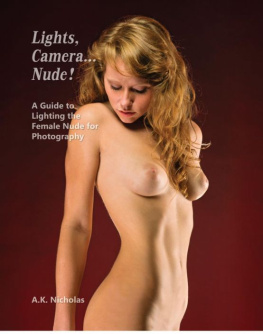

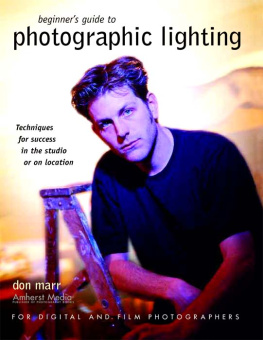
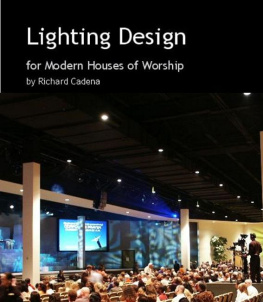
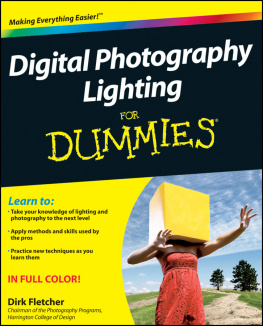

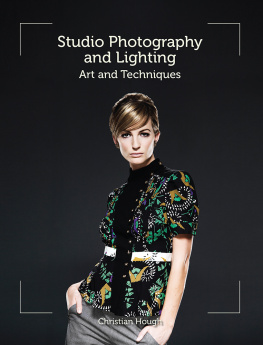
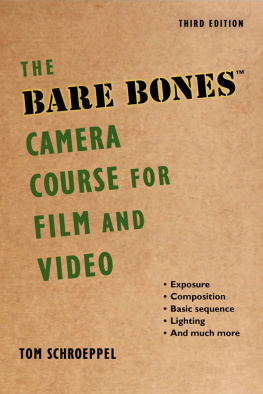
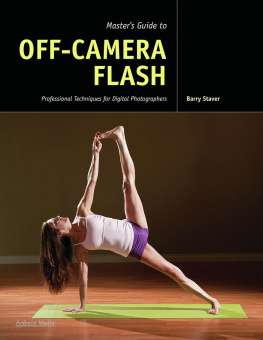


 Light intensity To produce high-quality pictures the light level (intensity) needs to be appropriate for the sensitivity of the medium youre using, and the lens aperture (f-stop). As we shall see later, if there is too little light, focusing can be very difficult (limited depth of field) and various picture defects become prominent (e.g. picture noise).
Light intensity To produce high-quality pictures the light level (intensity) needs to be appropriate for the sensitivity of the medium youre using, and the lens aperture (f-stop). As we shall see later, if there is too little light, focusing can be very difficult (limited depth of field) and various picture defects become prominent (e.g. picture noise).